For birders, the most famous line in all of superhero mythology is a terrible letdown. Imagine yourself heading for the park, binoculars around your neck, right at the peak of migration, and hearing somebody yell out “It’s a bird!”
But it’s not. It’s not even a plane, one of those objects so frequently mistaken for a bird that it has its own avian nickname (“Diesel Hawk,” “Boeing’s Warbler,” etc.) No, it’s just some guy in a leotard.
And as disappointed as these imaginary birders might feel, we real ones often feel similarly unimpressed by the combination of birds and superheroes, whether on a page or on a screen. Why? Because naming a comic-book hero after a bird is frequently a recipe for mediocrity.
It’s a harsh assessment, but the roster of ornithological heroes proves its truth: Nighthawk. Snowbird. Golden Eagle. Lady Lark. Not an A-lister among them, is there? Sure, there are a few major villains with bird names, including the Penguin and the Vulture (who is rumored to be Spider-Man’s foe in the 2017 reboot), but big-name heroes with bird symbols? Not really a thing. And don’t make the mistake of assuming that Robin the Boy Wonder, a legitimate comics star, falls into this category; co-creator Jerry Robinson insisted that the character was named not after the bird, but after Robin Hood, which explains the youngster’s merry disposition, not to mention his rather medieval-looking jerkin and elf boots. The short pants? Still a mystery.
The first true ornithological hero actually predates Robin by several months. DC Comics’ Hawkman, who debuted in 1940, has appeared in a variety of incarnations, but his primary function seems to be as part of an ensemble. Despite his striking appearance and his long history, he has never advanced beyond cult status, even when drawn by such talents as the legendary Joe Kubert. Hawkman does, however, demonstrate one element of the relationship between birds and superheroes: It’s sexually dimorphic. Males are plumed one way, females another.
Among superheroes, if you’re named after a songbird, you’re almost certainly a woman. Marvel Comics’ Songbird is the obvious example, more obvious than DC’s Raven, who has starred in the Teen Titans’ adventures since the 1980s. The most famous comics passerine, however, is DC’s Black Canary, the leather-and-fishnet-clad heroine who debuted in 1947. She has been through multiple incarnations in comics, as well as on live-action TV, starting with the CW series Arrow. Like Hawkman, she has a tendency to appear in ensembles such as the Justice League, but one such group earned both critical praise and commercial success in the hands of writer Gail Simone: Birds of Prey.
The irony is that not one of the , arguably the best-known female supergroup in comics, is actually modeled after a bird of prey. The canary is a finch, while Oracle (nee Batgirl) and Huntress aren’t even remotely birdish. (Even more bizarre: In the animated series, one of the Birds is Catwoman.) I can only assume that the cause is the unwritten rule among superheroes that bird-of-prey imagery is reserved for men.
With the exception of Hawkman’s junior partner, Hawkgirl (later Hawkwoman), only guys get to use raptor names—Blackhawk, Hawkeye, Starhawk, and Darkhawk among them—and raptors are almost the only birds guys use. I say “almost” because DC did have a very minor hero named Blue Jay, whose power to shrink, grow wings, and presumably jeer at other heroes did not endear him to fans. It’s also rather telling that DC published a book called Hawk and Dove, featuring two superheroic brothers with opposing temperaments, and that after Dove died in action, his non-predatory role was filled by a woman.
In 1969, however, the most significant bird-related hero to date debuted. The Falcon was not only raptor-themed, but was mainstream comics’ first African-American superhero. (Marvel’s first black hero, the Black Panther, was a native of Africa.) Possessed of little more than fighting prowess and a trained raptor named Redwing—not to mention a rather garish green and orange costume—his early success rested rather heavily on his partnership with Captain America. In fact, in 1971, Cap’s series was retitled Captain America and the Falcon, thus making Sam Wilson’s alter ego the first black hero to get title billing. He also switched his outfit’s color scheme to red and white and picked up some high-tech wings, but by the end of the 1970s, his star had dimmed.
But then Marvel Studios started making movies. And from the moment Anthony Mackie appeared onscreen in Captain America: The Winter Soldier, the Falcon had a new and exciting incarnation. His wings weren’t just transportation, but a combination of weaponry and defense, and his fighter-pilot bravura made him an audience favorite. By 2015, Marvel’s comics line had given Sam Wilson a promotion, letting him replace Steve Rogers in the role of Captain America—one more sign that you can’t reach the big time wearing feathers.
In short, the superhero genre has used birds in a manner that is frequently both sexist and uninteresting: Too often, heroines are patterned after tiny birds with lovely songs, while male heroes spread mighty pinions and adopt the attitudes of predators. Perhaps this is why ornithological superheroes have struggled. And perhaps it’s an indication of the best way to proceed. Comics fandom is obviously waiting for some young woman to take up the mantle of the Philippine Eagle, while somewhere out there is a mild-mannered man ready to star in The Sensational Sedge Wren.
Excelsior!
(Peter Cashwell is an English teacher, a birder, and the author of The Verb 'to Bird' and Along Those Lines.)

